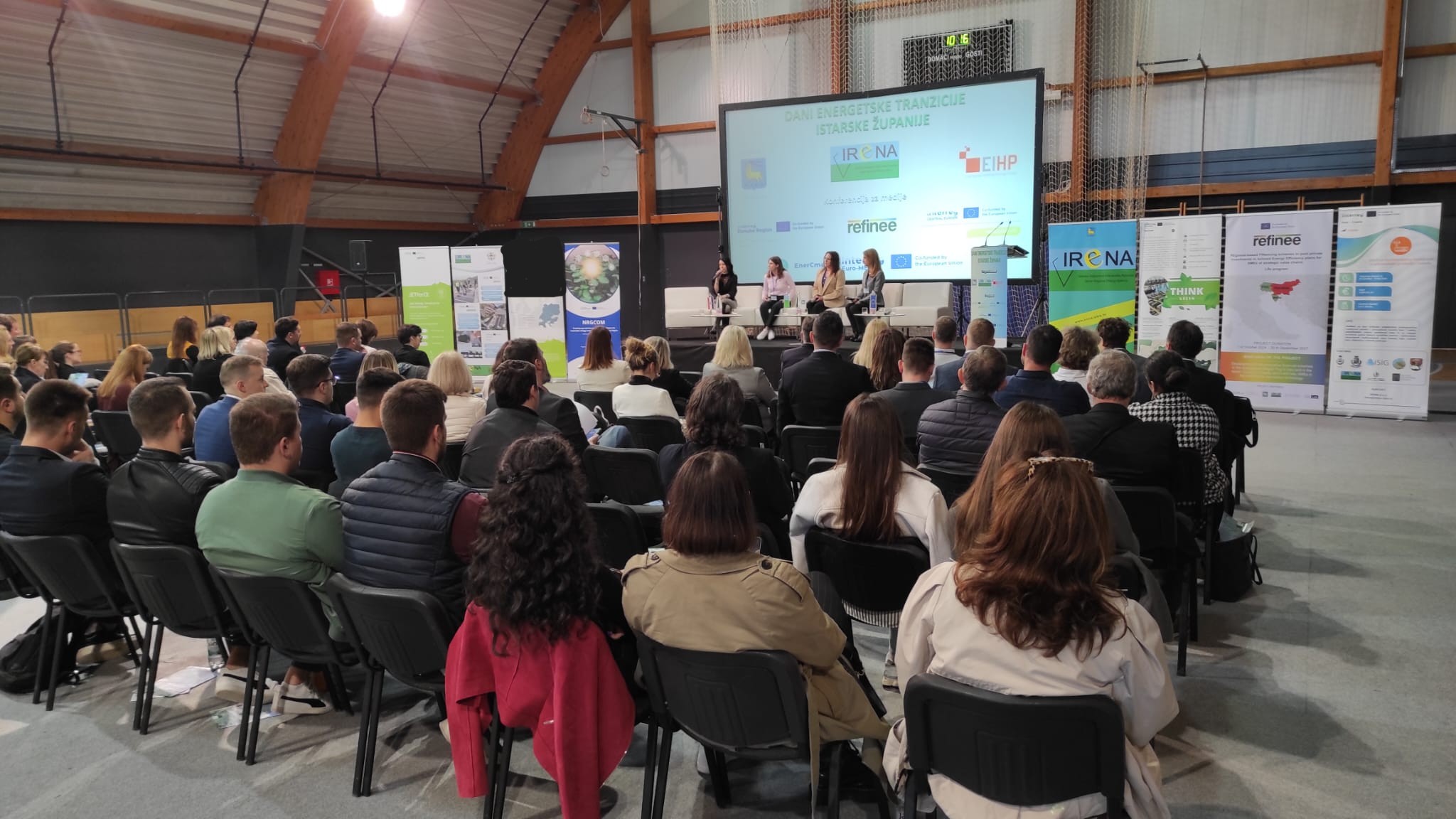IRENA – Istrian Regional Energy Agency form Labin, Croatia, hosted the second edition of the Istria County Energy Transition Days on April 16, bringing together nearly one hundred participants from the fields of energy, public administration, academia and civil society. This two-day conference focused on the development of energy communities and their transformative potential for accelerating the local energy transition.
The event was officially opened by Tulio Demetlika, Deputy Prefect of Istria County, who emphasized the region’s pioneering role in promoting sustainable energy production and consumption. “Energy communities offer a new opportunity to involve citizens in a transition that must be fair, locally driven, and energy efficient,” he stated.
A particularly engaging and interactive discussion highlighted the multidimensional nature of energy communities. Far from being a concept of the distant future, they are already proving to be practical tools for building more resilient and equitable energy systems. However, speakers pointed out several key barriers in Croatia, including a complex regulatory framework, underdeveloped technical infrastructure, and a general lack of energy literacy among the public.
One of the standout moments of the conference was the presentation of the HERCULES-CE project by Ana Boneta Jančić, project manager from IRENA (Istrian Regional Energy Agency). HERCULES-CE aims to create a bridge between cultural heritage and clean energy through the establishment of a heritage-based energy community—a model that seeks to protect local identity while promoting energy independence and sustainability. Through HERCULES-CE, we’re not only fostering renewable energy use, but we’re also preserving the cultural character of historic areas by involving local communities in the decision-making and energy production processes.
The idea for a heritage energy community has already sparked significant interest and has been actively communicated both in the city of Labin and throughout Istria County. Information has been shared through a wide range of channels, including digital platforms and printed media, ensuring that the vision of the project reaches both citizens and stakeholders alike.
As the HERCULES-CE project continues to evolve, it stands as a unique and inspiring example of how energy transition can go hand in hand with cultural preservation. The establishment of this new community in Labin will not only empower local residents but also serve as a replicable model for similar regions across Europe looking to harmonize tradition and innovation.
With initiatives like HERCULES-CE, Istria continues to lead by example, proving that a sustainable and inclusive energy future is not just a goal—but a path already being built, one community at a time.
